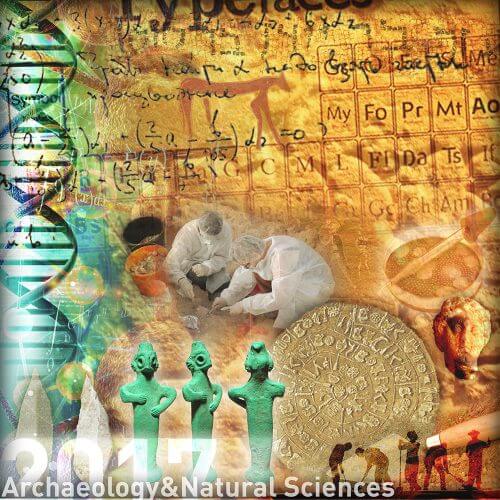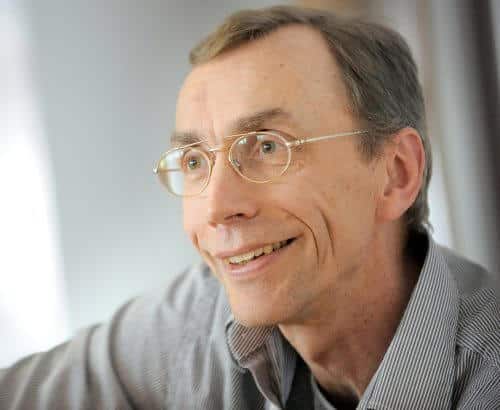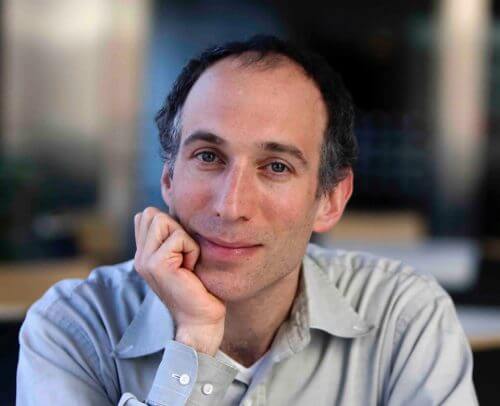Prof. Israel Finkelstein, winner of the corresponding prize in 2006, described the revolution passing through the world of archeology and how two researchers from the natural sciences won the Dan David Prize for 2017 in the past tense dimension in the field of archaeology. In recent years, the relationship between archeology and the natural sciences has been getting tighter

Two researchers from the natural sciences won the 2017 Dan David Prize in the past tense dimension in the field of archaeology. In recent years, the relationship between archeology and the natural sciences and even the exact sciences has been getting tighter, and this relationship was at the center of this year's award in the past dimension.

Prof. Svante Pabo (Prof. Svante Pääbo) (Winner of the 2022 Nobel Prize in Physiology or Medicine), a Swedish evolutionary geneticist, is awarded the Dan David Prize for being a world pioneer in the field of DNA sequence mapping of ancient humans and for being the first to extract and map the Neanderthal human genome - from fossils. Prof. Pabo laid the foundations for the field of genomic archeology research.
Pabo, who heads a genetics laboratory at the Max Planck Institute for Evolutionary Genetics in Leipzig, is one of the founders of the field of paleogenetics, the leader of the international project to map the Neanderthal human genome, and a partner in the discovery of Denisovan man - a species of man that differs in its genetic structure from Homo sapiens and Neanderthal man. He is not an archaeologist by training, but an expert in molecular biology, a graduate of Uppsala University in Sweden. In the early XNUMXs, he managed to obtain a sample from an Egyptian mummy in a museum in East Berlin and disproved the prevailing assumption until then that DNA decomposes quickly after the death of a person or animal and proved that it is possible to trace the pharaonic dynasties using the DNA of their dead.

Prof. David Reich (Prof. David Reich), an American geneticist from Harvard University receives the Dan David Award for being a world leader and pioneer in the analysis of ancient human DNA, and using advanced computing, for discovering the connection between Neanderthal man and Homo sapiens (modern man) - a move that contributed significantly for the study of human evolution. The university's website states that Reich's laboratory investigates the intervention of populations mainly for medical purposes, evolutionary research and population genetics. The history of the human race is sometimes explained as a series of splits - the split of the ancestors of the human race from the chimpanzees 7-5 million years ago, the spread of man from Africa to Eurasia 100,000-40,000 ago and the spread to America at least 15 years ago.
Together, the two researchers made a significant contribution to the study of the past of the human race using ancient DNA and led to substantial discoveries regarding the behavioral and biological results associated with hybrid breeding. The identification of the two (using the extraction of a mitochondrial genome from a 40-year-old finger bone found in Denisova Cave in Siberia) of the Denisovan man, an ancient species that until then was new to science, who lived during the time of the first modern man and the Neanderthal man, was also a revolutionary contribution to the study of human evolution.
Prof. Israel Finkelstein from the Department of Archeology at Tel Aviv University introduced a new field in archaeological research - micro-archaeology. Unlike macro archeology - the objects, human and animal remains, which is the main focus of classical archaeological research, today every excavation site is equipped with a mobile laboratory for the purposes of identifying the materials and describing them. If before they dealt with the connection between the natural sciences and archeology such as archaeo-botany or archaeo-zoology, they did not go in the microscopic and especially molecular direction of archeology and this is the revolution that has taken place in recent years. So much so that excavations host a laboratory in the field, when the intention is to receive types of information that allow to direct the research, to make decisions already in the field regarding the continuation of the research at the given site. The revolution was reflected in new scientific journals that combine archeology with the natural sciences, and articles in archeology also began to appear in general scientific journals such as Nature, Science and PNAS.
We work differently than before. About a hundred years ago, the British archaeologist Macalister excavated in Gezer, and he signed all three volumes of the investigation report. Today such a report may include 70-60 researchers. According to him, the researchers come from different disciplines which together allow for a better insight into the site.
If you look at the fronts of archaeology, there are two directions that are not sufficiently studied and may change our knowledge of the past, not only in Israel but throughout the world.
For example the issue of climate - 25 years ago the view was that for the last 5,000 years the climate in our area was stable. But it turns out that there were climatic changes. In the Levant an area that sits on both sides that sit on Safar areas, a small change in precipitation can cause big differences. An example of this is the civil war in Syria that broke out after a long period of droughts that hit the Safar areas of Syria and Syria is all an area of Safar (the A. B. desert) mainly in the Euphrates areas which receive relatively little precipitation, and thus the result is not immediate but it ultimately results in a series of of processes that led to what they led to.
In 2014, a comprehensive study was published on this subject in PNAS which showed that the severe droughts in the east of Syria are part of the driving processes that brought about all the political events we see. The second field - which concerns the work of the two winners of the 2017 Dan David Prize in the dimension of the past - archeology and the sciences: mapping human movements. Migrations, agriculture, human movements in space. This is an area that cannot be reached and tested accurately without using ancient DNA. Both Pabo and Reich deal with important issues in evolution - who we are.
Prof. Finkelstein gave an example of a study he was involved in which examined the types of plant dust that floats in the air and reaches the bottom of lakes, where it accumulates. Therefore identifying the vegetation in each period can tell us about the climate at that time. Indeed, a study conducted in which cores were taken from the bottom of the Sea of Galilee and the Dead Sea revealed that at the end of the second millennium BC - the beginning of the 12th century AD there was a drought that lasted for about 150 years. It is she who brought about the collapse of society in the entire Middle East, the Hittite Empire disappeared, the Egyptians who also ruled the land of Canaan were weakened. It happened gradually but in the end the area did not look the same after that period compared to before. A group from Toulouse carried out the same research on the Syrian coast - in the Latakia area as well as in southern Cyprus. If until a few years ago there was a debate as to what caused that collapse, these findings unequivocally prove that it was the direction of climate change.
Another example of this can be seen in a DNA study of pigs from that period, and it turns out that while in the surrounding countries the pigs were of a Middle Eastern variety, in Israel they were of a European variety, and they apparently arrived together with the Sea Gentiles (the Philistines AB)
Prof. Yosef Klefter, Chairman of the Board of Directors of the Dan David Prize and President of Tel Aviv University and Prof. Itamar Rabinowitz, Chairman of the Dan David Foundation, announced today (Tuesday, February 7, 2017) the winners of the Dan David Prize for 2017. The prestigious award , named after Mr. Dan David, an international businessman and philanthropist, who passed away several years ago, is awarded annually to people who have demonstrated special excellence and made an extraordinary contribution to humanity, in the fields of science, spirituality, art, public service and the world of business. The award, given in Israel, is currently among the top international awards.
The Dan David Prize, awarded annually, will for the 16th year distribute three prizes worth one million dollars each to 7 winners in the three dimensions of time - past, present and future. The fields in which the awards are given this year are: in the dimension of the past - archeology and natural sciences, in the dimension of the present - literature and in the dimension of the future - astronomy.
According to the tradition of the award, the winners donate 10% of the award money to twenty scholarships intended for young researchers at the doctoral and post-doctoral stages in Israel and around the world.
- The article was updated on 3/10/2022 with the winning of Prof. Svante Pavo with the Nobel Prize for Medicine.

One response
Esau our hairy Neanderthal